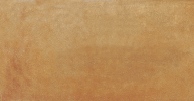
Home- Concrete Floor Stains>Acid Stain Colors
Let's take a look at the various concrete acid stain colors This applies to most all of the stain products on the market except ours which are UV stable and can be applied in exterior and interior seetings. Can you imagine the design possible options? The eight primary acid stain colors are: Black : Black is actually a very deep chocolate brown which when only apply straight or slightly diluted will give a "black" color. You may find that the mottling or varigations are the deep chocolate described previously. When this color is diluted you can also acheive a beautiful brown and diluted still further a taupe. Red: While a brick red is not possible with true acid stain this color is simply a magnificent color to be used in a "Southwest" or "Mexican" decor. |
Home- Concrete Floor Stains What is Concrete Acid Stain Acid Stain Colors Benefits of Acid Stain Concrete Acid Stain Your Own Floors Concrete Acid Stain Training CDR Artistic Decor Stains - Concrete Acid Stain CDR Vivid-Tone Stain CDR Thin Texture CDR Clear Cover Water Based Concrete Sealer CDR Clear Cover Solvent Concrete Sealer CDR Citrus Magic concrete cleaner CDR Citrus Peel Professional Installation of Concrete Acid Stain Floors |
Testimonials of the Month:
I can't thank you enough for all the help you gave me with my project, thanks alot.
Ken Owens
Wise, Va.
Wow is all I can say, the floor looks like a beautiful leather floor. We are so pleased with the outcome, thanks so much.
Susan DiMascio
Career Solutions International
Sanford, Fl.
You did a Great Job! Everyone loves these floors (us included). Send everyone by to take a look.
Jill Blackstock - Owner
Tropical Smoothie Cafe - Rock Quarry Rd.
Stockbridge Ga.
I just wanted to let you know that your site was very informative and really helped me with my decision to acid stain my basement on my own.
Jan Hunt







